12 Reasons Why Traffic in Google Analytics is Slowly Declining
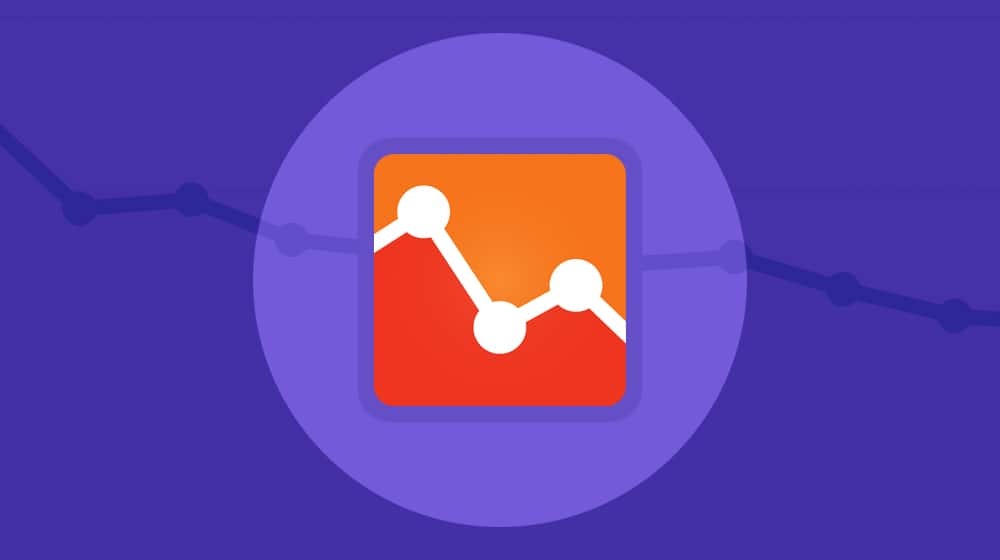
When you run a blog, you end up glued to your analytics. You want to see how the changes you make and the content you publish affect your traffic, and Google Analytics is one of the best ways to track that information.
Organic traffic swings up and down, sometimes slowly and sometimes abruptly. Many words have been written about abrupt traffic drops, like algorithm updates from Google and other search engines, search penalties, and code issues.
Those, while devastating, are relatively easy to track down and offer a straightforward way to fix them.
What about a slow decline?
What if your traffic has been dropping slowly and steadily for the past few days, weeks, or months, like the tortoise wearing himself out?
Think of it like the mythical frog in a pot. According to the parable, tossing a frog in a pot of boiling water will cause it to hop out immediately. If you put it in a pot of cool water and slowly turn up the heat, you'll cook the frog because it adjusts to a constant "new normal" until it can no longer handle it.
(Ignore the fact that this myth is just that. A frog in boiling water will be injured or die near-immediately and won't escape; one in increasingly-warm water will flee as soon as it gets uncomfortable, long before it gets hurt. In our analogy, a site hit with a massive penalty has just as much chance of shuttering entirely as it does recovering. At the same time, you can reverse a slower decline relatively quickly.)
If you've noticed that your website traffic has been on a general downslope in Google Analytics or Google Search Console, there are many possible causes and ways to solve it. Let's look at those causes and solutions, shall we? I'll start with the more benign causes and work on the worse problems.
1: General Site Neglect
The internet is awash with blogs that are on hosting that is paid for but haven't received new updates in years, yet those sites are still alive. These sites may even have value and can still rank highly for queries in their niche, but they aren't receiving more updates. They atrophy over time, losing a bit of value here and there as their best content slips below modern standards or their topics are outranked by newer, more active blogs.
There are certainly reasons why you might want to quit blogging, and a site can linger for a surprisingly long time before it finally slips away, unnoticed, into the mists of time. When you let your site languish and neglect its upkeep and maintenance, you'll see a slow decline in traffic over time. So it goes. Right?
If you're neglecting your site (the small details, in particular), you will see a slow but steady decline in your traffic. People lose interest and stop checking sites that don't receive updates. The content you've published slips further and further out of relevance.
The tricky part is this can happen without you ever realizing it. Maybe you've never noticed much difference between images you upload in full resolution or those with compression, so you stop compressing them to save time. Perhaps you felt like publishing new content twice a month wasn't sustainable, so you dropped to once per month.
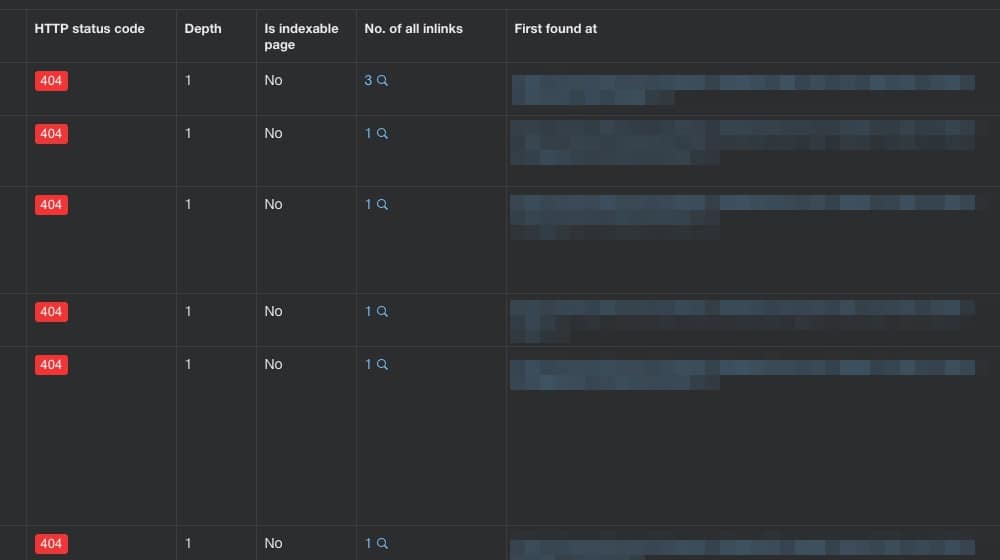
You may put less effort into your metadata or stop implementing as much Schema. It's common for a new plugin or script to slow down your website and cause it to start loading more slowly and fail on PageSpeed Insights.
Whatever the case is, these small decisions can add up over time, and while no single one of them is backbreaking for your site, the accumulated weight erodes the website the longer they persist. This phenomenon is why I always recommend an annual audit of best practices to determine where you should focus your energy and what you've started slacking on throughout the year.
2: Seasonal Swings and a Short Analytics Window
This one is less damaging.
Google Analytics has a narrow window for the analytics it shows you, usually the last 30 days by default. It's probably the least damaging out of everything on this list because it's not an algorithmic change in traffic but a seasonal one. You can expand the timeline, of course, so you can see traffic trends by quarter, year, or even as long as you have historical data.
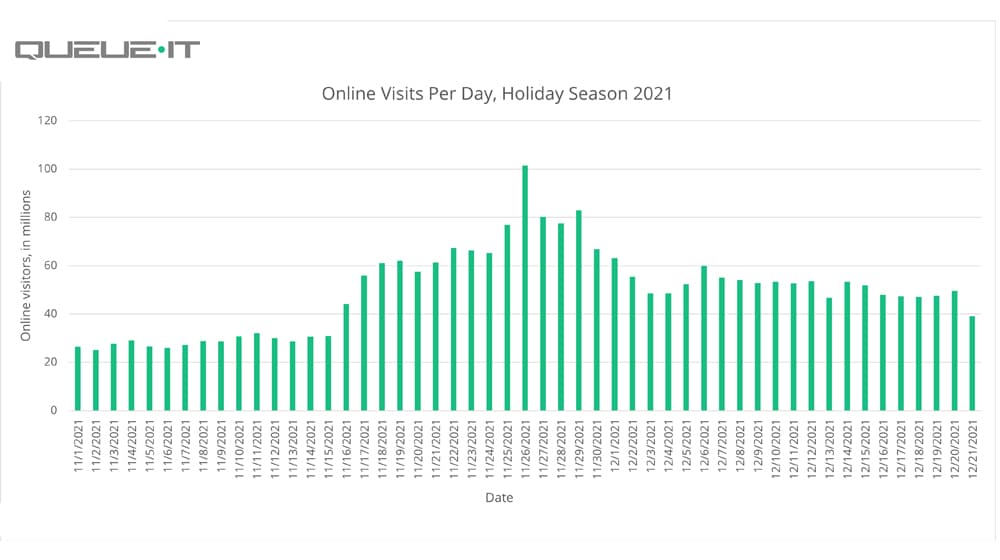
So, how does this problem crop up? The viewport may have changed. You're used to seeing the past year at a glance, but somehow the default view started to show the past month or quarter instead. Perhaps someone else on your analytics team changed it, or Google changed their Analytics version (like they're currently doing with their migration from Universal Analytics to Google Analytics 4). With the shift, they changed your defaults.
Whatever the case, your traffic may trend downward because it's the off-season, and that's what happens, especially with eCommerce stores. A heavily seasonal industry is likely to see a decline over time leading up to the seasonal surge, and seeing that data out of context can be distressing until you realize what went wrong. So, check your viewport and ensure you see the full scope of your data, not a misrepresentative sample.
3: Growing Competition in Your Niche
A common mistake that novice endurance athletes make is pushing too hard at the start of a race.
You see it in running and cycling marathons; people surge to the front of the pack immediately, even developing a significant lead, only to run out of energy in the first third of the race and finish somewhere near the end of the pack. Competent athletes conserve as much of their energy as possible and make well-timed sprints to move up through the ranks to have a shot at the finish.
In SEO and digital marketing, particularly blogging, you're in one of the longest-running endurance competitions ever made. It's best to use your resources wisely to expend them on well-timed marketing efforts to surge to the front of the pack when the opportunity arises. You don't want to burn out in the first month or two and give up.
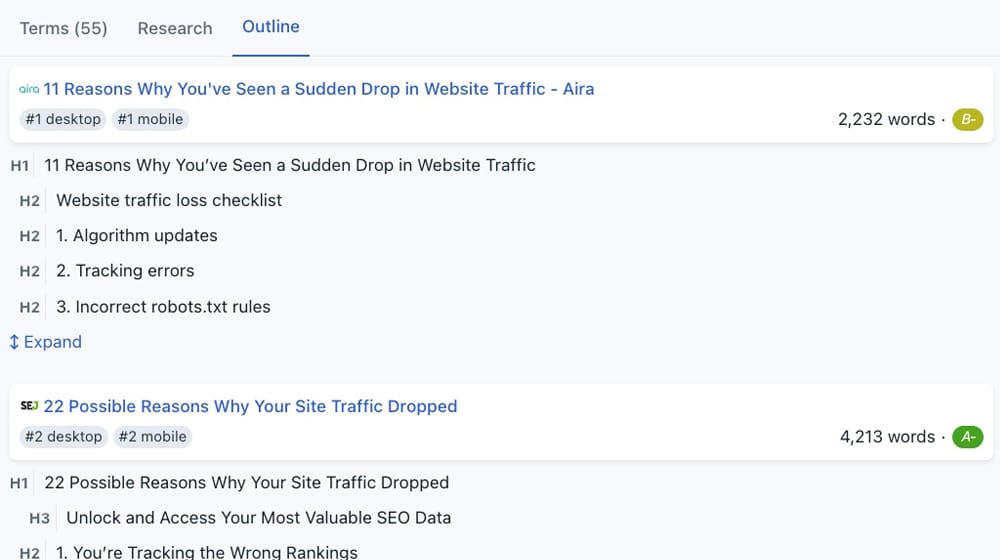
Whether you've been ranked well for a while or have yet to see movement and don't feel like it's time to expend that energy, you may be slipping behind in that pack as other competitors move ahead of you. Maybe they're putting 10% more time and energy into their sites than you are.
Perhaps they're putting in their sprint and will fall back after their investment ends. Whatever the case is, growing competition – either from a single major competitor or just a series of smaller brands siphoning off bits of your organic search traffic – will lead to declining traffic for your site.
Luckily, it doesn't take much to regain your position, assuming you're operating from a place of established authority. You'll have to dial up your investment in your organic marketing, namely SEO and content creation, to surge back ahead.
4: Backlink Sources Disappearing
These days, it almost feels like the internet has calcified. Those who remember the 90s and early 2000s remember a constant churn of sites coming and going, with brands appearing, lasting for a couple of years, and disappearing just as quickly. Today, you see the giants that have been running for decades, and it's hard for new sites to show up and even harder for established sites to die.
The thing is, there's a ton of churn under the surface. Forbes might not die, but thousands of posts on Forbes may be altered, edited, or removed immediately. These significant sites are constantly revamping and auditing their content, and part of that means removing old content, delisting it, editing it, and generally performing good housekeeping.
Content changes are mainly unimportant, except for cases where that content had a link to your site in it.
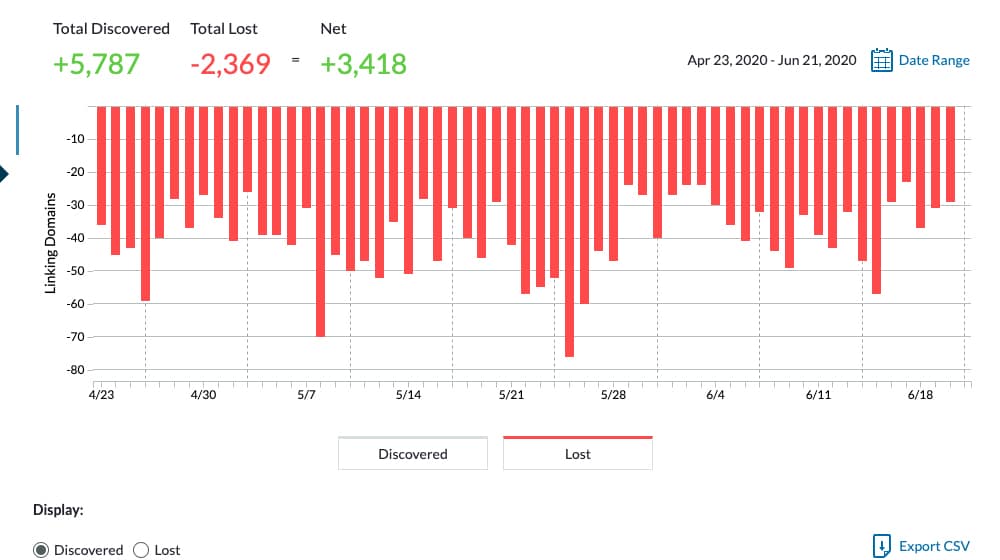
Backlinks are hugely important to SEO and, thus, your search ranking and traffic numbers. Gaining strong backlinks is awesome; losing those strong links can result in a sudden drop or fluctuations in SERPs, traffic, and authority metrics.
Link building is one of the best things you can do to boost your site regardless, so it's always worth investing in. There are a lot of different ways to monitor and audit your backlinks; I like Ahrefs, but there are many alternatives like SEMrush and Moz. Keep an eye on your backlink profile, and if you notice some links disappearing (some tools can notify you of this), work to recover or build new backlinks to replace them.
5: Less Proactive Promotion
One of the most common reasons I've seen for a site to start tapering off in traffic is because they've stopped actively promoting themselves quite as much. It could be that Facebook's reach and engagement have dropped, so you put less time into it. Or, a billionaire bought a social media network and is running it into the ground, so you've pulled your advertising. One of the other channels you liked may have changed, meaning promotion isn't as valuable.
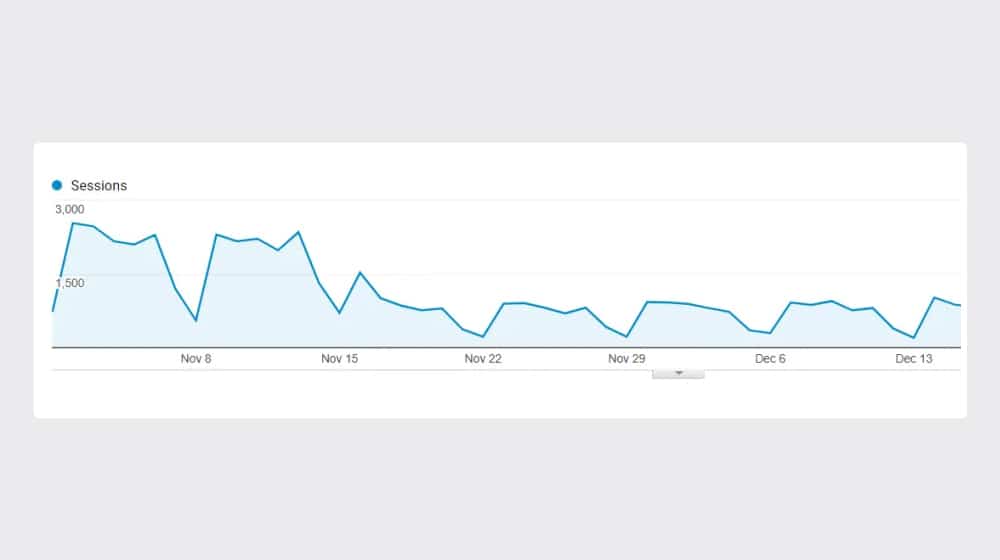
Whatever the case, your promotion engine supports your current traffic numbers. The less time and effort you put into promoting your site, the lower your results will be.
There are a ton of different ways to promote your site.
Browse through that list, pick a couple you've been slacking on or still need to do, and give them a try. You can do a decent job of boosting traffic with little effort and investment.
6: Rising SEO and Content Standards
Way back in 2011, the internet looked like a very different place. The average blog post was a keyword-filled nightmare under 500 words long, and finding any information was a huge chore. Google knew something had to change, so they pushed Panda, an algorithm that penalized duplicate, thin, and low-quality content.
We create blog content that converts - not just for ourselves, but for our clients, too.
We pick blog topics like hedge funds pick stocks. Then, we create articles that are 10x better to earn the top spot.
Content marketing has two ingredients - content and marketing. We've earned our black belts in both.
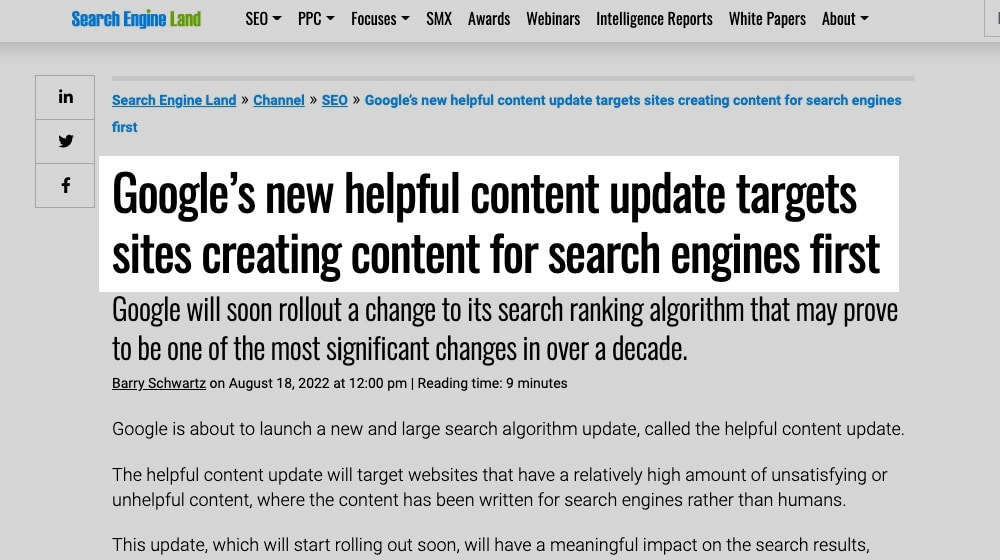
In the decade since then, Google has pushed hundreds of updates to its algorithms. Most of these are aimed at improving the quality of the search results, but some are aimed at general improvements to the internet as a whole. A prime example is their push to emphasize mobile websites. They know that over half of all web traffic comes from mobile devices, so pushing to have everyone make optimized, functional mobile versions of their sites is a good thing.
The bar is constantly raised throughout culture – look at strongman competitions to see how a few decades ago, what was once a world record is now what some athletes train on their off days. You might be operating at your peak performance, but the average of what is considered "peak performance" has increased. You might need to catch up if you've been doing the same thing for years.
7: Minor Issues, Particularly with CWV and Mobile
Major site issues, SEO issues, script errors, link problems, or manual actions can destroy a website overnight. We're not talking about those today.
Instead, let's talk about those minor errors. That one nagging Schema issue that you need help fixing consistently, that post that never seems to get indexed properly, or that one display issue that prevents you from getting perfect speed scores.
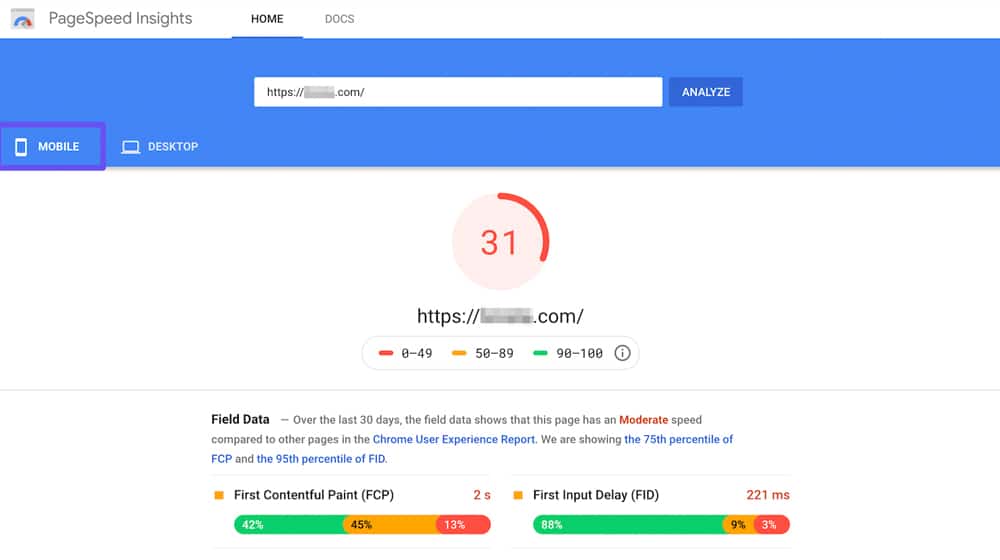
Individually, none of these errors damage your site. Google recognizes that it's nearly impossible to have a "perfect" website, so minor errors, user experience oddities, or technical issues rarely hurt your ranking or performance. In an ideal world where there was another site identical to yours except without the mistakes, Google would theoretically rank that site higher, but that can't happen.
A handful of sand won't hurt your car, but sandblasting will strip the paint right off, right?
Three of the most significant sources of these errors are the Core Web Vitals, mobile performance, and broken links. These three have very high standards to get "perfect" or near-perfect scores, and the standards are constantly increasing little by little as minor errors accumulate and the damaging effect compounds.
If your competition is staying on top of these things more than you are, it might be giving them the edge they needed to outrank you.
8: Incomplete Analytics Data
Another common issue that shows traffic declining is when your analytics are not working correctly. Maybe your traffic isn't declining! This situation may be the reason for your traffic loss, but your conversions and revenue have stayed consistent.
All it takes is a stray template page on your site that doesn't have analytics code appropriately implemented. That template gets used more and more – maybe for landing pages, certain types of blog posts, whatever the case may be – and as a result, a growing proportion of your site doesn't have analytics on it and isn't tracking your traffic.

You can check to see if this is your issue in two ways:
- The easiest is to check a variety of your recent content and see if the analytics script exists on the public-facing page. If you want to perform a deeper audit, you can use software like Screaming Frog to scan the source code of every page on your site. If your pages all have your tracking code installed, great. If not, you've found your issue.
- The other option is to list your recent content and cross-check it against the URL reports in Google Analytics to see if they're all recorded. You can also use various tools and tests to see if Google Analytics is working correctly.
Any issue with data tracking can cause insufficient analytics data and declining traffic.
9: Lower Ad Investment
Do you pay for advertising?
Do you boost posts on Facebook, pay for promoted pins on Pinterest, or pay to gain more exposure on Instagram?
Do you pay Google for PPC ads, use Taboola or Outbrain for display ads, or spend money on sponsored content? How diversified is your paid promotion?
I always say that SEO and PPC are two opposite sides of a coin. SEO can be done yourself (if you know what you're doing) and is a slow-and-steady source of growth that compounds over time. Conversely, PPC gets you immediate traffic for money, but when you stop paying, you stop getting that traffic. The retention rate for visitors coming in from PPC is distressingly low. Of course, you can use both together, and you should.
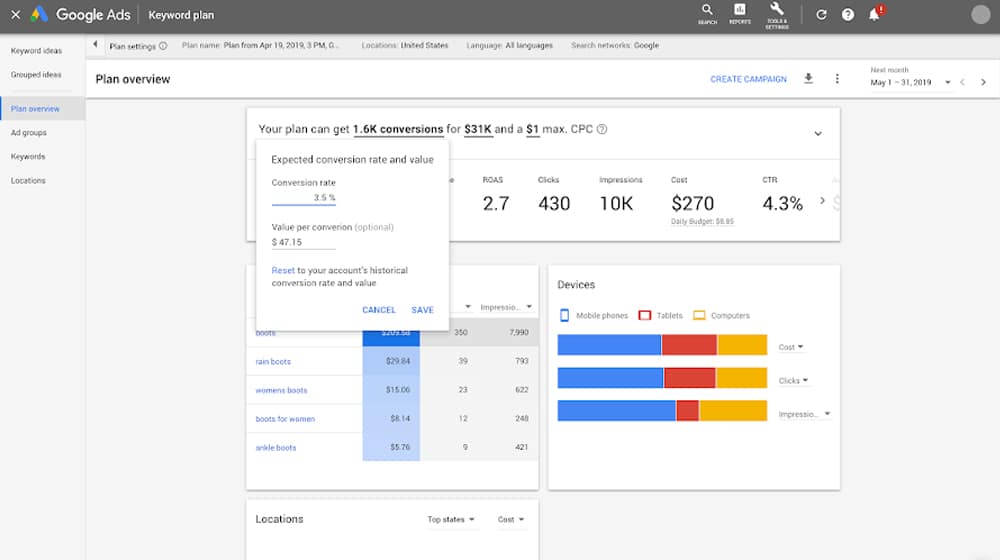
The trouble is when your investment in PPC drops, so too does your traffic. You may have reallocated your budget elsewhere, or your investment is time, and your attention has dropped, so your ads are less efficient and optimized. Either way, the quality and traffic driven by your ads decrease, so your overall site traffic declines.
To be clear, I'm not talking about a sudden stop to your PPC; I'm talking about times when your PPC is running on autopilot and getting less efficient over time or times when you've just slashed your PPC budget by 5% every few months until it's having a tangible negative effect.
10: Slacking on Onsite SEO
I mentioned this in passing somewhat, but any time the amount of effort you're putting into your site tapers off, you will see a decrease in your traffic.

Common causes of this include:
- Putting less effort into optimizing for keywords.
- Putting less effort into your content in general.
- Doing less optimization of your images and media.
- Doing less optimization of your meta descriptions, titles, alt text, and other fields.
- Not removing unused or slow WordPress plugins.
- Putting less attention into Schema markups.
- Being less engaging with your commenters or letting spam comments linger longer.
There are many different things your daily and weekly optimization checklists should include, and a lot more that goes into your content production pipeline. When ignored or left out, all of these can degrade the traffic you get over time.
On top of that, you have ongoing periodic maintenance. For example, you should regularly perform content audits and analyze your blog's state in general. When you find content that no longer meets current web standards and could be holding you back, it can be worthwhile to prune it. Keeping it around can hurt you over time.
You never know until you try it out and measure the results, right?
11: Fewer Internal CTAs and Less Compelling Content
Traffic isn't just about the people who visit your site for the first time and read a single page of content. It's about the people who arrive, read a page, and click through to read other pages.
To encourage these people to stick around, you need a good internal link policy and a compelling call to action to get them to click; this is a vast topic.

I've written a ton about it, and rather than even try to summarize it here, I'm going to give you a bunch of links you can read if the topics interest you. (See what I did there? Call to action, internal links. Nice!)
These should give you a good idea of managing your internal links and your calls to action for maximum retention.
12: Dropping Interest in General
One of the worst sources of declining traffic is declining interest. You're doing everything right, but there's only so much you can do to fight against decreasing interest. The VHS player fell out of fashion, the landline phone dropped off, and there are only so many people still interested in stamp collecting; the best SEO will only grow you more traffic than exists for that specific set of keywords. You'll have to target new groups of keywords surrounding your industry.

In some cases, a niche is shrinking, and there's not much you can do about it. It may be time to look into pivoting or implementing a vertical growth strategy before you're left with no recourse.
Did this help you out? Did you discover the possible reason for your decreasing traffic? If so, let me know in the comments. Or, if not, let me know that too, and I can see if I have more ideas you can check. Either way, drop me a line!





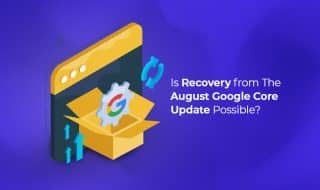
November 24, 2022
I am completely agreeing with you, even I have seen traffic decline for few of our projects. And I had researched on different dimensions to know why are the traffic declining even few of our clients leads get declined as well.
One of the major reasons I found that is declination in search trends of related keyword search in Google.
November 28, 2022
Thanks for your comment!
Sure, sometimes it's a natural decline in the interest of a topic. Other times the keywords that are dropping off are totally unrelated to the pages that were ranking for those keywords, so it's not entirely surprising that they are dropping off.
In broad strokes, large walls of keyword rankings declining for specific pages indicates a larger issue with the page, though. Increased competition, stale or out-of-date content, broken links, reduced visibility on your website - it could be any number of things.
Whatever the case, improving the pages that were affected by the drop is almost always the best course of action.
October 19, 2024
Hey James thanks for sharing this great post. 😊 I've seen that competition can totally spike out of nowhere sometimes. How do you usually keep track of all the new competitors in your niche? It kinda feels like staying ahead takes quite a bit of effort!
October 24, 2024
Hey Tina! Thanks so much for checking out my post. You're absolutely right; new competitors can show up really quickly.
I keep an eye on them by using tools like Ahrefs and SEMrush. My clients also find these tools to be really helpful.
Please let me know if you would like any more tips! 😊